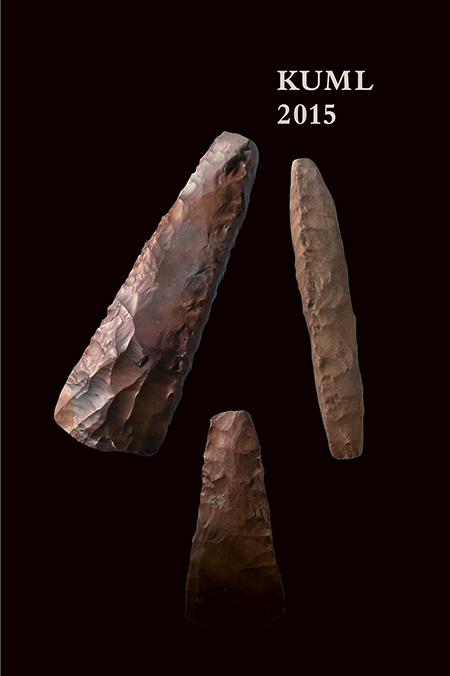Om tordenkiler, stenøkser og uddøde dyr
DOI:
https://doi.org/10.7146/kuml.v64i64.24214Keywords:
tordenkiler, stenøkserAbstract
On thunderbolts, stone axes and extinct animals
Thunderbolts, in the form of fossilised sea urchins, belemnites and flint tools, have been seen as being created by thunderstorms and as possessing magical powers in many places around the world, far back in time. This paper demonstrates how these ideas were accommodated within the Christian ideology and how it was discovered that stone axes were actually man-made tools. This realisation did though present a number of problems to which the scholars of the time had to find solutions. When and why did people use stone tools when metal was already in use seven generations after Adam? The Age of Enlightenment had the idea that people at this time had, consequent on Babylonian linguistic confusion, perhaps degenerated to base bestial proclivities, before common sense subsequently prevailed bringing forth humanity once more. Perhaps metal was completely forgotten in this context.
But then a new problem arose in that, around 1800, it was realised that animals could become extinct and, consequently, that God’s Creation was not immutable. This extinction was, with due reference to the various layers in which the bones were found, explained as a succession of God-created epochs separated by a succession of cataclysmic events, with the creation of humanity about 6000 years ago as the most recent and most quintessential of the former. The discovery of what were now considered to be stone tools together with the bones of extinct animals therefore posed major analytical problems, especially for the Romantic Movement, which perceived everything as a single integrated organic entity. It was all or nothing. But maybe the Flood had not been global – were there perhaps survivors from earlier catastrophes, for example Asians and Africans?
This paper shows how stories about the origin of mankind relating to stone axes must continually be explained by interpreting these in the spirit of the time. This has resulted in what we today consider to be some rather imaginative, even humorous, explanations for the discovery of stone tools. In this respect, however, the stories of the Age of Enlightenment and the Romantic Movement are perhaps no different from those we produce today. Both then and now, these finds had to have an explanation, and when it comes to the origin and development of humankind, science must find solutions which combine the spirit of the time with what are perceived as finds and what are understood as realities in relation to these finds, in order to arrive at an explanation which is acceptable at the time. This was the case back then and my aim with this paper is to encourage reflection now on what we take for granted about the remains we find from the past and to which we, with state legitimised professional authority, allocate an explanation.
Ole Høiris
Institut for Kultur og Samfund
Aarhus Universitet
Downloads
Published
How to Cite
Issue
Section
License
Fra og med årgang 2022 er artikler udgivet i Kuml med en licens fra Creative Commons (CC BY-NC-SA 4.0).
Alle tidligere årgange af tidsskriftet er ikke udgivet med en licens fra Creative Commons.


